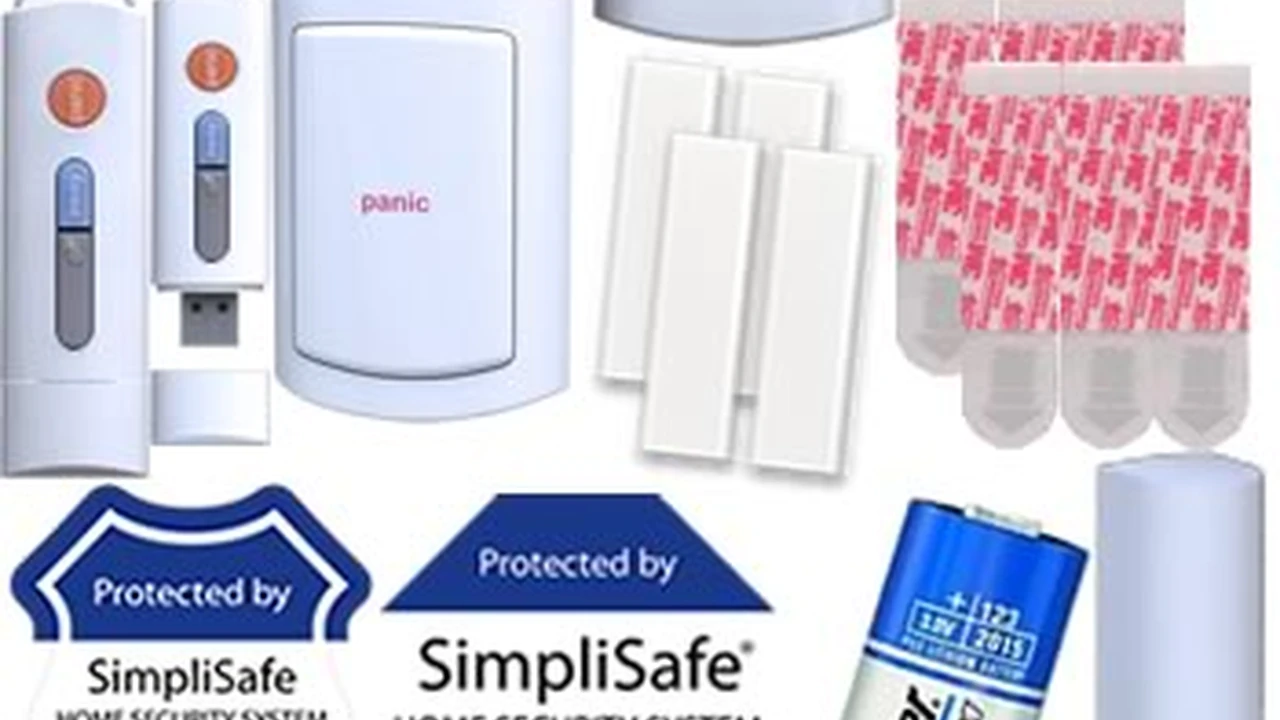3 Essential Features of Modern Access Control
Explore the three most important features that define modern access control systems for robust security management.

Explore the three most important features that define modern access control systems for robust security management. When it comes to safeguarding your premises, whether it's a bustling office, a quiet residential building, or a high-security data center, traditional locks and keys just don't cut it anymore. Modern access control systems have evolved far beyond simple entry and exit management. They're now sophisticated, integrated platforms designed to offer unparalleled security, flexibility, and operational efficiency. But with so many options out there, how do you know what truly matters? Let's dive into the three essential features that every modern access control system absolutely needs to have.
3 Essential Features of Modern Access Control
Advanced Authentication Methods Beyond the Key
Gone are the days when a physical key was your only gatekeeper. Modern access control systems leverage a variety of advanced authentication methods, offering enhanced security, convenience, and auditability. This isn't just about replacing a key; it's about creating a multi-layered security approach that adapts to different needs and risk levels.Biometric Authentication for Unmatched Security
Biometrics are at the forefront of secure access. Instead of something you have (like a key card) or something you know (like a PIN), biometrics use something you *are*. This makes them incredibly difficult to forge or share. The most common biometric methods include:- Fingerprint Scanners: Fast, reliable, and widely accepted. Modern fingerprint readers are highly accurate and can even work with wet or dirty fingers.
- Facial Recognition: Offers hands-free access and is becoming increasingly sophisticated, capable of distinguishing between live faces and photographs.
- Iris/Retina Scanners: Provide the highest level of security, often used in highly sensitive environments due to their unique and stable patterns.
Mobile Credentials for Convenience and Flexibility
Your smartphone is already your wallet, your camera, and your communication hub – why not your access credential too? Mobile credentials allow users to gain access using their smartphones, often via Bluetooth Low Energy (BLE) or Near Field Communication (NFC) technology. This offers several advantages:- Convenience: No more fumbling for cards or remembering PINs. Your phone is usually always with you.
- Remote Management: Credentials can be issued, revoked, or updated remotely, simplifying administration.
- Enhanced Security: Mobile credentials can be protected by the phone's own security features (PIN, fingerprint, face ID), adding another layer of authentication.
Smart Cards and Multi-Factor Authentication for Layered Security
While biometrics and mobile credentials are gaining traction, smart cards (like MIFARE or DESFire) remain a cornerstone of many access control systems. They offer more security than older proximity cards by encrypting data and supporting multi-factor authentication (MFA). Multi-factor authentication combines two or more different types of credentials. For example, a user might need to present a smart card *and* enter a PIN, or use a smart card *and* a fingerprint scan. This significantly increases security by requiring multiple pieces of evidence to grant access. For smart card readers, the Axis A1601 Network Door Controller, often paired with various card readers, offers a robust solution for networked access control. The controller itself can cost around $800-$1,200, with compatible readers ranging from $150-$400 depending on their capabilities (e.g., supporting multiple card technologies or mobile credentials). Another excellent option is the Mercury Security LP1502 controller, which is highly flexible and integrates with a wide range of readers and software platforms. These controllers are typically priced between $700 and $1,100. When implementing MFA, the cost often comes down to the software licensing and the specific readers chosen, as many modern readers are designed to support multiple authentication types.Seamless Integration with Other Security Systems
An access control system operating in isolation is like a single puzzle piece – it's functional, but far from complete. The true power of modern access control lies in its ability to seamlessly integrate with other security and building management systems. This creates a unified, intelligent security ecosystem that provides a holistic view and proactive response capabilities.Video Surveillance Integration for Visual Verification
Imagine an access event occurring – a door being forced open, or an unauthorized attempt to enter. Without video, you only have a log entry. With integrated video surveillance, you get immediate visual verification. This means:- Event-Triggered Recording: Cameras can automatically start recording when an access event occurs (e.g., a door held open too long, an access denied).
- Visual Verification of Access: Security personnel can visually confirm who is entering or exiting, preventing tailgating or the use of stolen credentials.
- Forensic Analysis: Easily retrieve video footage associated with specific access events for investigations.
Intrusion Detection and Alarm System Integration for Rapid Response
When an unauthorized entry is detected by the access control system, it should immediately trigger an alarm. Integrating with intrusion detection systems (IDS) and alarm panels ensures a rapid and coordinated response.- Unified Alerting: All security events, whether from access control or intrusion detection, are consolidated into a single interface.
- Automated Responses: An access violation can automatically trigger an alarm, lock down other doors, or notify security personnel.
- Reduced False Alarms: Intelligent integration can help differentiate between legitimate access and actual intrusion attempts.
Building Management System (BMS) Integration for Operational Efficiency
Beyond security, modern access control systems can integrate with Building Management Systems (BMS) to enhance operational efficiency and occupant comfort. This is where security truly becomes smart building management.- HVAC and Lighting Control: When an area is accessed, the HVAC system can automatically adjust temperature, and lights can turn on. When the area is vacated, they can power down, saving energy.
- Elevator Control: Access credentials can be used to grant access to specific floors, enhancing security and streamlining traffic flow.
- Occupancy Management: Real-time occupancy data from access control can inform space utilization strategies and emergency evacuation plans.
Robust Scalability and Future-Proof Architecture
Your business isn't static, and neither should your security system be. A truly modern access control system must be designed with scalability and future-proofing in mind. This means it can grow with your organization, adapt to new technologies, and remain effective for years to come without requiring a complete overhaul.Cloud-Based Solutions for Flexibility and Remote Management
Cloud-based access control has revolutionized the industry, offering unparalleled flexibility, scalability, and ease of management. Instead of on-premise servers and complex IT infrastructure, the core software and data reside in the cloud.- Scalability: Easily add or remove users, doors, and locations without significant hardware investment.
- Remote Management: Manage your entire access control system from anywhere with an internet connection, using a web browser or mobile app.
- Automatic Updates: Software updates and security patches are handled by the provider, ensuring your system is always up-to-date.
- Reduced IT Overhead: No need for dedicated servers or IT staff to maintain the system.
Open Architecture and API for Customization and Integration
Proprietary systems can be a nightmare. They lock you into a single vendor, limit your choices, and make future integrations difficult and expensive. A modern access control system should embrace open architecture and provide robust APIs.- Vendor Independence: Choose the best hardware and software components from different manufacturers, rather than being forced into a single ecosystem.
- Customization: Tailor the system to your specific needs, integrating with unique applications or workflows.
- Future-Proofing: As new technologies emerge, an open system can more easily integrate them, extending the lifespan of your investment.
Modular Design for Easy Expansion and Upgrades
Finally, a modern access control system should be built with a modular design. This means you can add components, expand coverage, or upgrade features without having to rip and replace the entire system.- Phased Deployment: Start with a basic system and expand as your needs or budget allow.
- Cost-Effective Upgrades: Replace individual components (e.g., readers, controllers) as technology evolves, rather than the whole infrastructure.
- Reduced Downtime: Upgrades and expansions can be performed with minimal disruption to your operations.
:max_bytes(150000):strip_icc()/277019-baked-pork-chops-with-cream-of-mushroom-soup-DDMFS-beauty-4x3-BG-7505-5762b731cf30447d9cbbbbbf387beafa.jpg)






